Easy Chicken Recipes for One Person with Few Ingredients
Cooking for one often comes with a unique set of challenges. Most recipes are designed for families or couples. They call for large portions, long ingredient lists, and assume you’ll want leftovers. But when you’re preparing food for just yourself, that kind of scale doesn’t make sense.
You’re not looking to spend an hour in the kitchen or wash three pans for a single plate. You’re not trying to store half a bunch of parsley you’ll never use again. You want a meal that’s fast, satisfying, and easy to shop for — with no waste and no overthinking.
This guide offers just that.
Here, you’ll find a set of smart, efficient chicken recipes tailored specifically for one person. These meals:
- Use five or fewer core ingredients
- Require only basic equipment — usually one pan or sheet tray
- Take 30 minutes or less to prepare
- Rely on versatile items you can repurpose through the week
- Deliver full flavor without excessive prep or cleanup
Whether you’re cooking after work, feeding yourself between classes, or just trying to eat better without relying on takeout or frozen dinners, these recipes are here to make solo cooking feel less like a compromise — and more like an act of care.
Why Chicken is Perfect for Single-Serving Cooking
If you’re cooking for one, chicken is one of the most flexible, forgiving proteins you can work with. It’s fast to cook, easy to portion, and works with almost every pantry seasoning or vegetable you might already have on hand.
Some proteins — like roasts or stews — simply don’t scale down well. Others, like fish, require precision and delicate handling. But chicken thighs or breasts are ideal:
they’re easy to cook in small batches, hold flavor well, and adapt to almost any cooking method.
Whether you’re using:
- A single pan
- A toaster oven
- An air fryer
- Or just a microwave and a hot plate
There’s a chicken recipe that fits.
In the next section, we’ll break down the most efficient cuts of chicken for one-person cooking, and which methods best match each one — so you can skip the guesswork and get right to eating.
Choosing the Right Cut and Cooking Method
When cooking chicken for one, not all cuts are equally practical. Some are more forgiving, others cook faster, and a few offer built-in flavor advantages that make seasoning almost optional. To streamline your solo cooking routine, it helps to understand what works best — and why.
Boneless, Skinless Chicken Thighs
Why it works:
Chicken thighs are a favorite among professional cooks and home chefs alike for a reason: they have more fat and connective tissue, which means more flavor and juiciness. They’re also nearly impossible to overcook. This makes them perfect for quick meals where you want crisp edges and tender meat, even if you get distracted or don’t have a meat thermometer.
Best cooking methods:
- Pan searing or sautéing
- Air frying
- Roasting on a sheet pan
Ideal for:
One-pan meals, high-heat cooking, and forgiving weeknight dishes with just salt, pepper, and garlic.
Chicken Breasts (Split or Cutlets)
Why it works:
Lean, mild, and widely available, chicken breasts are a blank canvas. But they’re also easy to dry out — especially in single-portion sizes. The key is to slice them thinly (cutlets) or pound them to an even thickness so they cook evenly and quickly.
Best cooking methods:
- Pan searing (with attention)
- Oven roasting with added fat (oil or butter)
- Simmering in sauce or broth (to protect moisture)
Ideal for:
Lighter meals, wraps, or dishes where the chicken is paired with a flavorful sauce or marinade.
Pre-Cooked Chicken (Rotisserie or Leftovers)
Why it works:
Sometimes, cooking from scratch just isn’t in the cards. Grocery store rotisserie chicken or leftover roasted pieces offer immediate protein that’s ready to slice, shred, and transform.
Best uses:
- Sandwiches and wraps
- Stir-fried rice or noodles
- Salads and grain bowls
Ideal for:
Zero-cook meals, fast lunches, or adding heft to dishes built from pantry staples.
Quick Comparison Table
| Cut Type | Cooks In | Texture | Risk of Overcooking | Best Use |
|---|---|---|---|---|
| Boneless thigh | 8–10 min | Juicy, rich | Low | Pan-fry, air fry, tray bake |
| Thin chicken breast | 6–8 min | Lean, mild | Medium | Wraps, sheet pan, pan sauce |
| Rotisserie (precooked) | 0 min | Variable | None (already cooked) | Sandwich, salad, quesadilla |
The key is not just choosing what’s available, but matching your cooking method to the protein. If you’re short on time, grab a rotisserie thigh and build around it. If you want a golden sear, use a small boneless thigh in a hot pan. If you’re trying to eat lean, slice a breast thin and don’t walk away from the stove.
Next, we’ll walk through three complete, minimal-ingredient chicken recipes, each designed for one person, with no scaling required.
Recipe 1: Pan-Seared Garlic Butter Chicken Thigh
This is a fast, flavorful, and deeply satisfying dish that can be made in under 15 minutes — perfect for nights when you’re hungry, tired, and not interested in washing more than one pan. It uses ingredients you likely already have and works especially well with boneless, skinless chicken thighs.
What makes this recipe ideal for solo cooking is its simplicity of technique and intensity of flavor. You’re not building a sauce. You’re letting good-quality butter, fresh garlic, and chicken fat do all the work.
Ingredients (Serves 1)
- 1 boneless, skinless chicken thigh
- 1 tablespoon unsalted butter
- 1 garlic clove, finely minced
- Salt and freshly ground black pepper
- Optional: squeeze of lemon juice or chopped parsley for garnish
That’s it — five ingredients, most of which are pantry staples. No marinades, no timers, no prep bowls. Just your protein, heat, and attention.
Step-by-Step Instructions
1. Pat the chicken dry.
Use a paper towel to remove excess surface moisture. This ensures the butter browns properly and gives the chicken a better crust.
2. Season generously.
Sprinkle both sides with salt and pepper. Since this is a minimal recipe, seasoning becomes even more important — it’s what wakes the dish up.
3. Heat your pan.
Place a small skillet (ideally nonstick or cast iron) over medium heat and allow it to get hot before adding anything. This prevents sticking and encourages browning.
4. Add butter, then chicken.
Melt the butter in the pan, letting it foam slightly. As soon as it does, lay the chicken in — smooth side down. You should hear a soft sizzle.
5. Cook undisturbed for 5–6 minutes.
Resist the urge to move it. Let it develop a golden-brown crust. Once the edges look cooked and the underside is nicely seared, flip it.
6. Add the garlic.
After flipping the chicken, immediately add the minced garlic to the butter in the pan. Stir it gently to avoid burning. The chicken will finish cooking in another 4–5 minutes while the garlic infuses the butter with flavor.
7. Check for doneness.
Insert a knife or use a thermometer: internal temp should read 165°F (74°C). The juices should run clear.
8. Finish with lemon or herbs (optional).
If desired, squeeze a bit of lemon juice over the top or scatter chopped parsley. This brightens the richness of the butter and lifts the overall flavor.
9. Serve immediately.
This dish is best eaten fresh. Pair it with a scoop of rice, sautéed greens, or just toast and a salad — no need for a side that complicates cleanup.
Why This Recipe Works for One
- Butter amplifies flavor without needing a sauce
- Boneless thighs are forgiving: even if you overcook by a minute, they stay juicy
- Garlic cooks in the residual fat, creating a built-in pan sauce
- No resting time required: single servings cool fast, so you can plate and eat immediately
This isn’t just an “easy meal” — it’s a reliable formula you can come back to, tweak with herbs or spices, and adapt to what you have on hand.
Recipe 2: Sheet Pan Chicken with Vegetables
When you want a hot, full meal with as little effort as possible, the sheet pan becomes your best friend. This one-tray method lets you cook both the chicken and vegetables at the same time, in the same space, with all the juices and flavors mingling in the oven.
It’s the perfect method for someone cooking solo because it’s:
- Hands-off once it’s in the oven
- Fully scalable (but naturally fits one portion)
- Great for cleaning out the fridge
No marinating. No saucepans. No mess.
Ingredients (Serves 1)
- 1 boneless, skinless chicken breast or thigh
- 1 cup mixed vegetables (zucchini, bell pepper, carrot, broccoli — any combination works)
- 1 tablespoon olive oil
- Salt and pepper
- Optional: ½ teaspoon dried oregano or thyme
Vegetables can be fresh or frozen (thawed and patted dry), and the spice blend can be anything you like. Even a bit of lemon zest, smoked paprika, or cumin would work here.
Step-by-Step Instructions
1. Preheat your oven to 400°F (200°C).
A hot oven is essential to get color and caramelization on the chicken and vegetables. If your oven runs cool, go up to 425°F.
2. Line a small baking sheet with parchment paper or foil.
This prevents sticking and makes cleanup easy. If you’re cooking in a toaster oven tray, reduce quantities accordingly — the method still works.
3. Cut the vegetables into uniform pieces.
Aim for bite-sized chunks (not too thin or they’ll overcook). If using root vegetables like carrots or potatoes, slice thinner so they cook at the same rate as the chicken.
4. Toss everything in olive oil, salt, and seasonings.
Use a bowl or mix directly on the tray. Make sure all ingredients are lightly coated — especially the chicken, which should have oil on all sides.
5. Arrange on the tray.
Place the chicken in the center, surrounded by vegetables. Don’t overcrowd — a little space between pieces allows for better browning.
6. Roast for 20–25 minutes.
Chicken is done when the internal temperature reaches 165°F (74°C). Vegetables should be soft and starting to brown on the edges. If using bone-in chicken, add 5–7 more minutes.
7. Rest and serve.
Let the chicken sit for 3–5 minutes before cutting. Serve directly from the tray or transfer to a warm plate.
Why This Recipe Works for One
- No stovetop needed — it cooks while you do something else
- Minimal slicing, zero stirring
- Vegetables become more flavorful as they roast in chicken juices
- Easy to vary with different spice blends or seasonal produce
You can repeat this recipe all week with just small changes: swap in sweet potatoes for bell peppers, try a spice rub one night and lemon zest the next — all without changing the core technique.
Recipe 3: No-Cook Chicken Wrap
This recipe is more of a method than a fixed formula — and that’s the beauty of it. You start with cooked chicken (either leftover from another meal, or pre-cooked like rotisserie), layer it into a wrap with your favorite spread and greens, and you’re done.
In under 5 minutes, you’ve got a meal that’s:
- Balanced in protein and fiber
- Portable and mess-free
- Adaptable to whatever’s in your fridge
- Zero-cook, zero-stress
It’s the kind of thing you can make with one hand while answering emails or packing a bag.
Ingredients (Serves 1)
- ½ cooked chicken breast or 1 cooked thigh, sliced or shredded
- 1 medium tortilla or wrap (flour, whole wheat, spinach, or gluten-free)
- 1 tablespoon mayonnaise, hummus, or Greek yogurt
- A small handful of greens (baby spinach, lettuce, arugula)
- Optional: sliced cucumber, tomato, avocado, pickled onion, or mustard
If you want a warm version, the wrap can be briefly toasted or grilled, but it’s excellent cold as-is.
Step-by-Step Instructions
1. Warm the wrap (optional).
You can microwave it for 10 seconds to make it more pliable or place it in a dry skillet for 20 seconds per side.
2. Spread the base layer.
Use mayo, hummus, mustard, or any condiment you enjoy. This adds moisture and flavor and helps keep the chicken in place.
3. Add the chicken.
Layer in the pre-cooked chicken in the center. You can use slices or shreds — just make sure it’s evenly distributed so the wrap folds neatly.
4. Add the greens and extras.
Top with a small handful of washed greens and any add-ins. Avoid wet ingredients like very juicy tomatoes unless you plan to eat it immediately.
5. Fold and roll.
Tuck the sides in, then roll tightly from the bottom. Slice in half diagonally for easier eating, or wrap in parchment if taking on the go.
Why This Recipe Works for One
- No cooking required, so it’s fast and safe for dorms or office kitchens
- Uses leftovers efficiently and prevents food waste
- Easy to personalize with different spreads or vegetables
- Scales instantly — make one now, prep another for later
You can also turn this into a salad bowl by skipping the wrap and tossing everything into a container. Add a bit of dressing, and lunch is ready.
Smart Storage & Reuse Strategies
When you’re cooking for one, leftovers can be a gift or a burden — it depends on how you handle them. Making slightly more than you need (for example, cooking two thighs instead of one) can save serious time and decision-making the next day.
But only if you plan for it.
Here’s how to get the most out of your chicken without repeating the same meal twice.
Cook Once, Eat Twice (Without Repeating Yourself)
If you’re already pan-searing a chicken thigh or baking a breast on a sheet pan, go ahead and cook two. The second portion can be repurposed into something entirely different the next day:
- Leftover thigh → sliced into a grain bowl with rice, roasted vegetables, and a spoon of dressing
- Leftover breast → chopped into a salad with crunchy lettuce, pickles, and a vinaigrette
- Sheet pan chicken → turned into a quesadilla with a bit of cheese and folded in a skillet
- Wrap leftovers → tossed into scrambled eggs for a 5-minute savory breakfast
The trick is to think in formats — bowl, wrap, salad, toast, or stir-fry — rather than feeling locked into one “dish.”
How to Store Single Portions Safely
Refrigeration:
- Store in a sealed container within 1 hour of cooking
- Use within 3 to 4 days
- Reheat only once to preserve moisture and texture
Freezing (for cooked chicken):
- Let cool completely, then freeze in small portions (sliced or shredded)
- Use within 2 months
- Thaw overnight in the fridge or gently in a skillet with a splash of water
Don’t freeze fully assembled wraps or salads — they’ll go soggy. Stick to freezing just the protein.
What Not to Do
- Don’t let cooked chicken sit uncovered in the fridge — it dries out fast
- Don’t refreeze after thawing — it compromises texture and food safety
- Don’t add creamy sauces before freezing — they tend to split when reheated
- Don’t reheat in high heat — always rewarm gently to avoid overcooking already-cooked meat
With a few storage containers and an organized fridge, your “single portion” meals can stretch further, give you more variety, and reduce your cooking load over the week.
Frequently Asked Questions (FAQ)
Can I use frozen chicken directly for these recipes?
It’s safest and most effective to thaw chicken fully before cooking, especially for pan-frying or baking. Cooking from frozen can lead to uneven doneness and dry texture. If you must cook from frozen, use the oven and increase the time by 50%, but check internal temperature carefully.
What’s the best way to thaw chicken quickly and safely?
The fastest safe method is to place sealed chicken in a bowl of cold water, changing the water every 30 minutes. Most boneless pieces will thaw in under an hour. Avoid microwaving unless absolutely necessary, as it starts cooking the edges unevenly.
Can I use bone-in chicken for these recipes?
Yes, but you’ll need to increase cooking time by 5–10 minutes depending on the method. Bone-in thighs roast beautifully, but for fast stovetop or sheet pan recipes, boneless cuts are better suited for single servings.
What if I only have chicken breasts and they always come out dry?
Thin the breast by slicing it horizontally or gently pounding to an even thickness. Don’t overcook — remove from heat when internal temperature hits 160°F (it will rise to 165°F while resting). Let it rest 5 minutes before slicing.
Can I prep several meals at once without eating the same thing every day?
Yes. Make a base protein (grilled or roasted chicken) and change up how you serve it:
Day 3: On toast with egg or avocado
The trick is changing formats and sauces.
Day 1: With rice and roasted vegetables
Day 2: In a wrap with greens and hummus
How long can cooked chicken be stored in the fridge?
Up to 4 days, tightly sealed. If you’re unsure when it was cooked, always check for smell and texture before reheating. Better safe than sorry.
Are these recipes healthy?
They’re balanced by design: lean protein, limited added fats, flexible carb and veg options. You can adapt each to low-carb, dairy-free, gluten-free, or high-protein diets by adjusting sides and condiments.
I don’t like reheating chicken — what can I do with leftovers cold?
Cold chicken is excellent when sliced thin and used in:
Pasta bowls
Just add a contrasting texture (like crunchy lettuce or toasted seeds) and an acidic element (mustard, lemon, vinegar) to bring it to life.
Sandwiches
Wraps
Salads
What’s the best oil to use for solo cooking?
Olive oil for general use, avocado oil for high-heat cooking. Avoid butter alone for roasting (it burns) but use it in pan sauces or quick sautéing.
I have a small kitchen — can I still do this?
Absolutely. All recipes here require just one pan, tray, or wrap surface. No food processor, blender, or mixer required. A nonstick skillet, baking sheet, and a sharp knife are enough for everything in this guide.
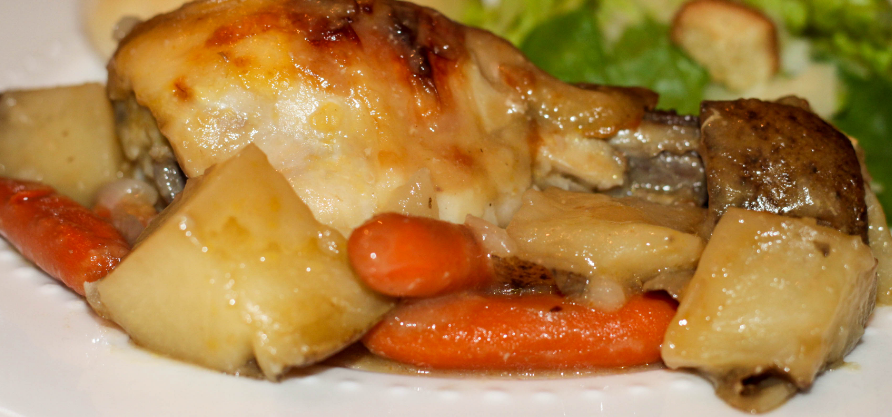
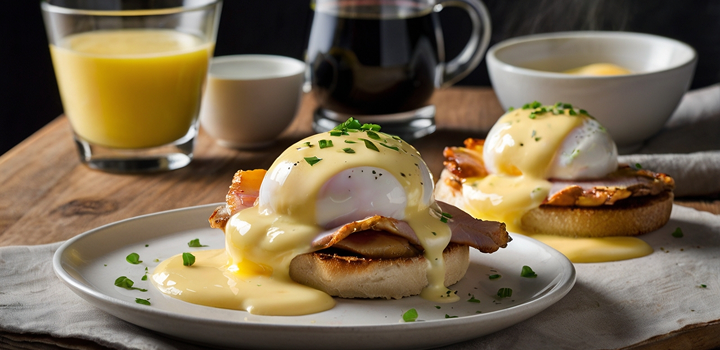
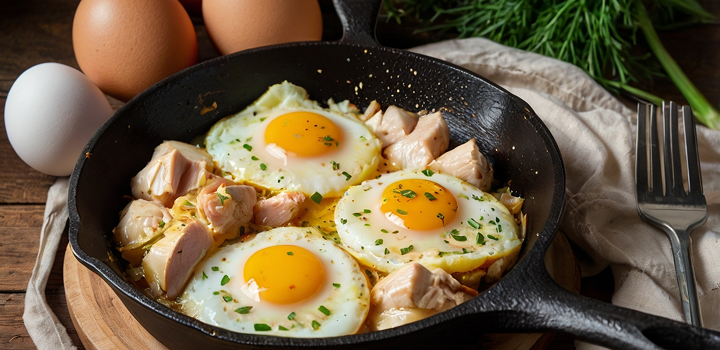
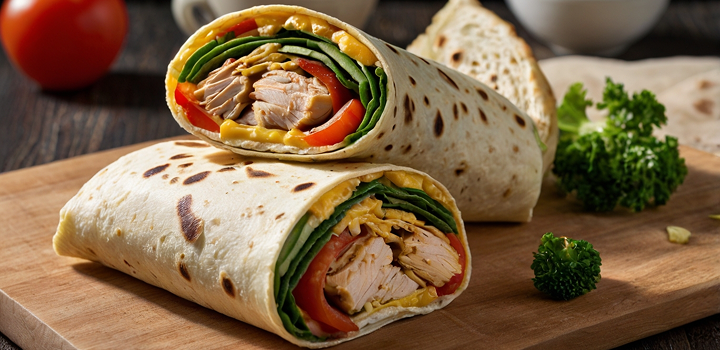
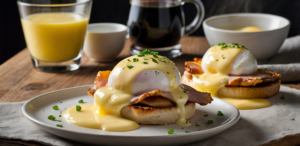
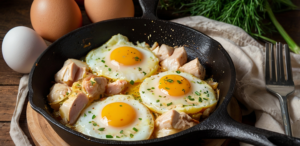
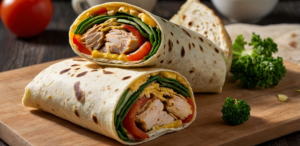
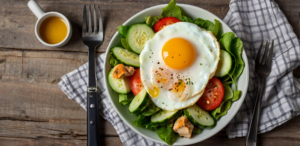
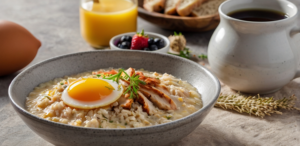
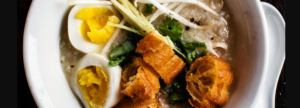

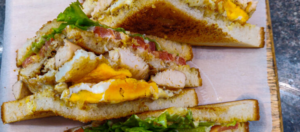
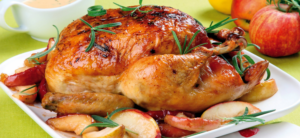
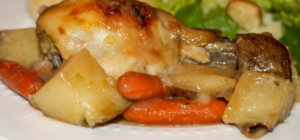
Post Comment